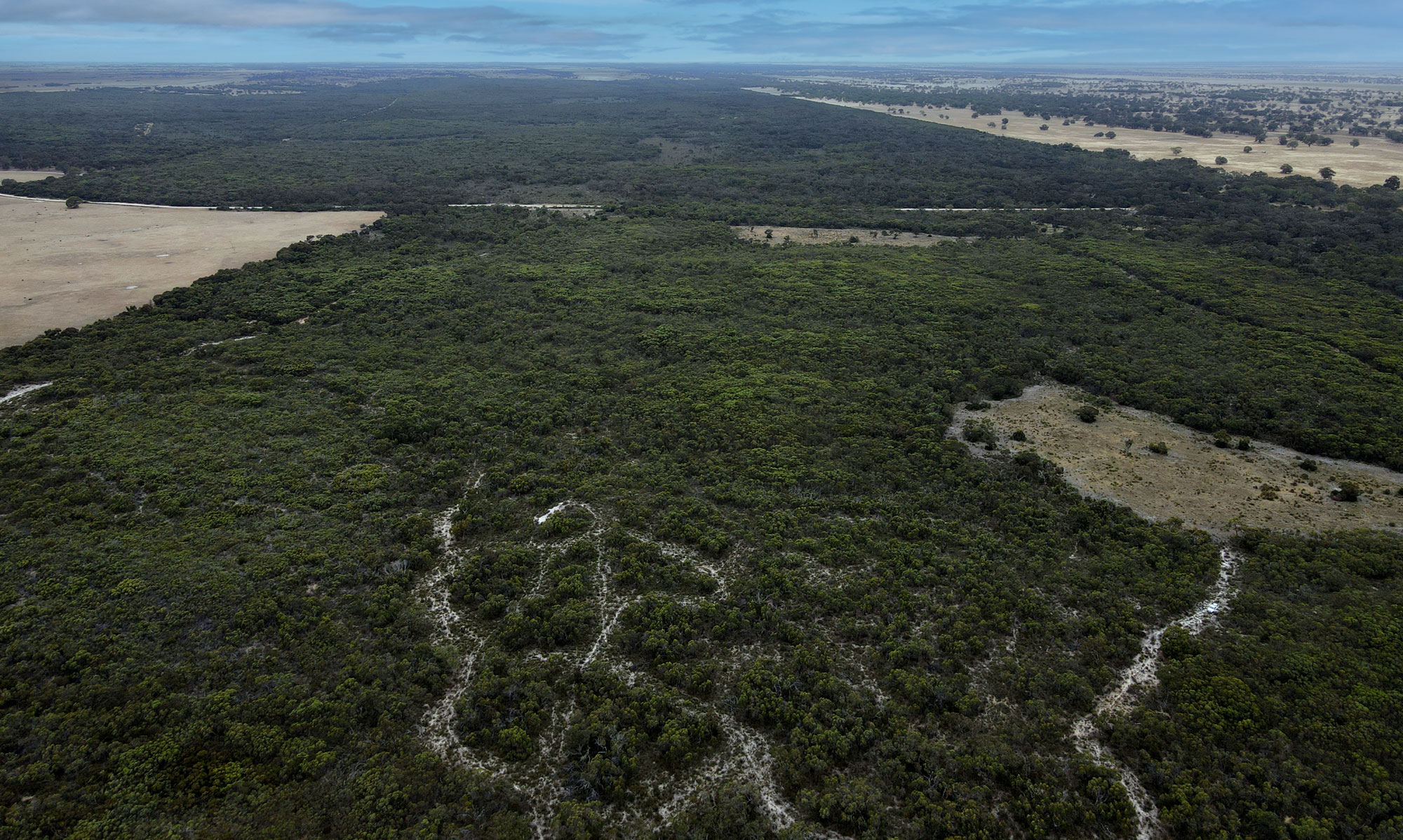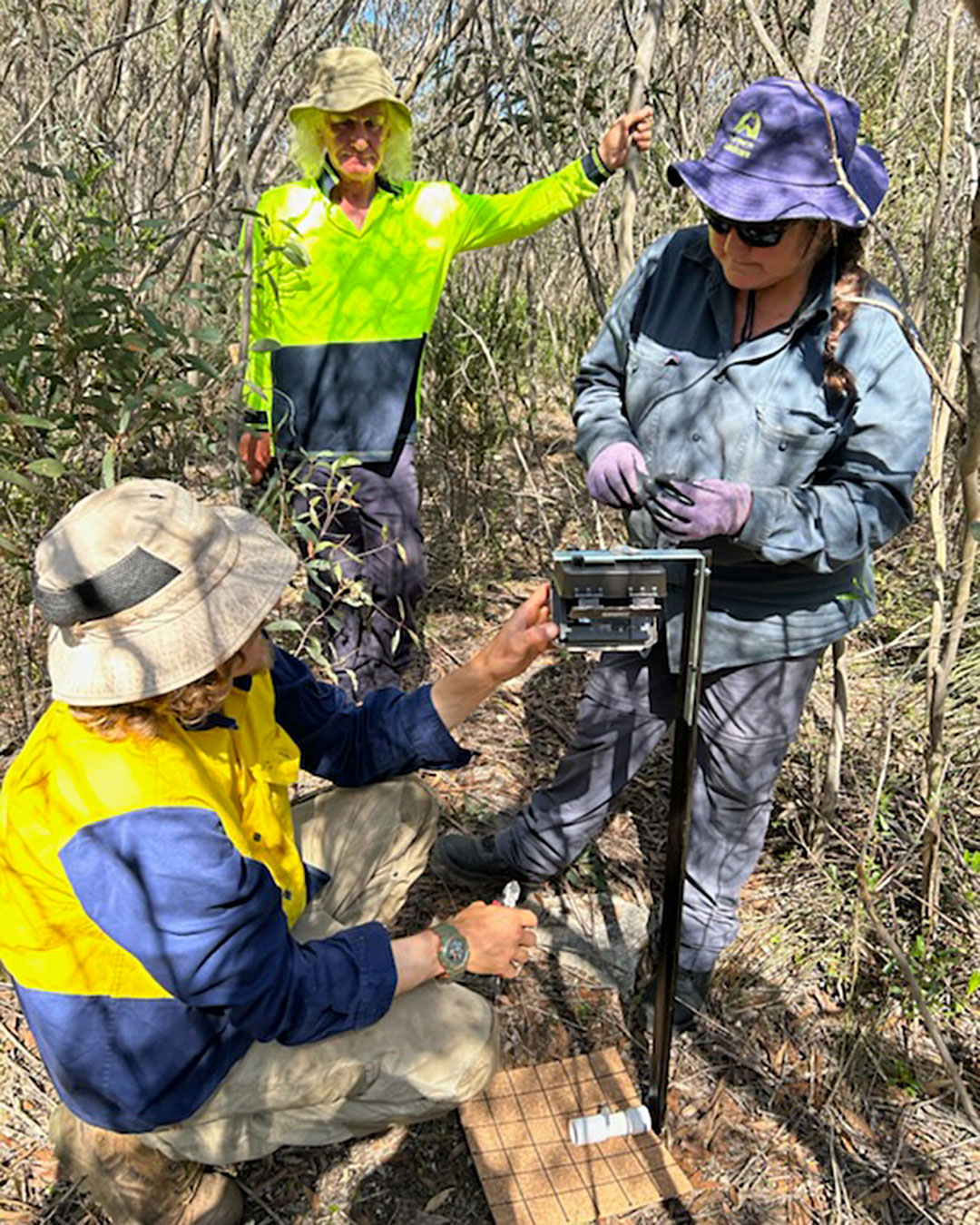An essential first step in developing strategic conservation management plans for any new nature reserve is undertaking baseline biological surveys. These surveys enable us to make informed, evidence-based management recommendations.
Bullock Bridge Nature Reserve—Bullocky Bridge as it is locally known—was acquired in early 2024, and the 203-hectare area boasts rich botanical diversity that supports a wealth of native birds, mammals and reptiles. While the reserve is under a native vegetation heritage agreement and contains self-sustaining intact native vegetation requiring low ongoing maintenance, some areas have been illegally cleared.
We need to determine the most appropriate revegetation options, with a longer-term goal to introduce regionally threatened plant species.

Before planning for long-term management, we must undertake a biodiversity inventory of the nature reserve to determine what species inhabit the region and establishes a baseline against which we can measure future management outcomes.
We are grateful to have received a Limestone Coast Landscape Board Grassroots Grant of $30,000, which will enable us to undertake the surveys required to establish a biodiversity baseline.
"The Limestone Coast Landscape Board Grassroots Grant will enable Nature Foundation to partner with Nature Glenelg Trust to collect baseline information on flora and fauna at the Bullocky Bridge Nature Reserve that will help characterise ecosystems and habitats and inform effective conservation management strategies. These funds will help us identify the site’s critical natural values and will provide opportunities for Traditional Owners and students from the local community school to connect with the reserve and engage in activities designed to conserve biodiversity and protect threatened species and habitats.”
– Paul van Ruth, Science and Knowledge Program Manager, Nature Foundation.
 This month, the Science and Knowledge team commenced this initial survey work with support from local staff from Nature Glenelg Trust. They established ten biodiversity monitoring sites that will form the basis for a long-term monitoring program.
This month, the Science and Knowledge team commenced this initial survey work with support from local staff from Nature Glenelg Trust. They established ten biodiversity monitoring sites that will form the basis for a long-term monitoring program.
The sites will record native bird species, mammals, reptiles, vegetation, and invasive species.
Leading benefactor, Professor Hugh Possingham, continues to partner with us on this highly significant parcel of bushland, working with our Science and Knowledge team to select the ten monitoring sites across the reserve that provide a cross-section of the key vegetation types:
-
Coastal mallee
-
SA Blue Gum
-
Stringybark
-
Heath
-
Mixed vegetation
Monitoring techniques will include:
-
Regular bird surveys to build on historical data
-
Reptile monitoring using the “tile flip” method
-
Pitfall and Elliot traps to detect small mammals
-
Remote cameras to assess the presence of small mammals, reptiles, large herbivores and invasive species
.jpg) Bullock Bridge Nature Reserve is part of one of the largest areas of intact native vegetation in the region and provides a refuge for local native fauna as well as species that are moving south seeking cooler climates. Initial surveys have detected the presence of Little (or Tasmanian) Pygmy Possum (Cercartetus lepidus), pictured right, and Western Pygmy Possum (Cercartetus concinnus).
Bullock Bridge Nature Reserve is part of one of the largest areas of intact native vegetation in the region and provides a refuge for local native fauna as well as species that are moving south seeking cooler climates. Initial surveys have detected the presence of Little (or Tasmanian) Pygmy Possum (Cercartetus lepidus), pictured right, and Western Pygmy Possum (Cercartetus concinnus).
We look forward to receiving the complete initial survey results, which will inform threat abatement and revegetation aspects of our conservation management plans.
We will be seeking support from our registered volunteers to assist with clean-up and revegetation tasks at Bullock Bridge from April 2025. If you are interested in joining our Volunteer program, you can register your interest here.
This project is supported by the Limestone Coast  Landscape Board’s Grassroots Grants program, and is funded by the regional landscape levy.
Landscape Board’s Grassroots Grants program, and is funded by the regional landscape levy.
Photo credits: Little Pygmy Possum and survey photo from Nature Glenelg Trust. Aerial photo of Bullock Bridge Nature Reserve by Alex Nankivell.